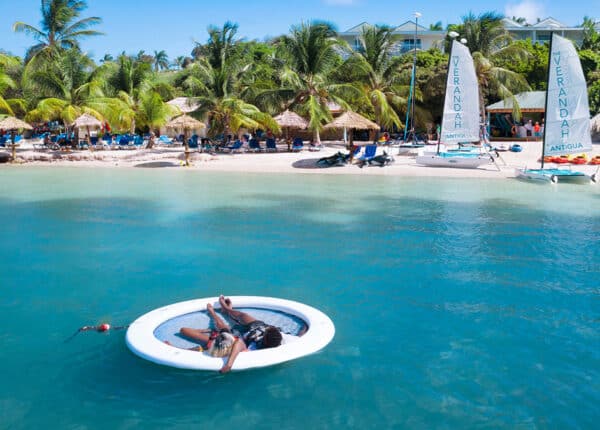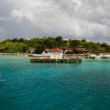By George Nicholson
Op-Ed Contributor
WE ARE all familiar with the proverb “Give a man a fish, and you will feed him for a day, teach a man to fish and you feed him for a lifetime.”
While the origin of the saying is largely unknown, it is generally attributed to Moshe ben Maimon, otherwise known as Maimonides, one of the most prolific scholars of the Middle Ages.
The context in which we examine this statement is in respect to the issue of equality and by extension self determination, as it applies to vulnerability or its obverse, resilience, to the effects of natural hazards within the Latin American and Caribbean region.
Research has shown that disaster related experiences are shaped in important ways by the same issues of stratification and inequality that influence person’s lives during non-disaster periods.
Disasters are recognised as arising from the confluence of disaster agents, vulnerable built environments and vulnerable population. Vulnerability as a concept itself has gone through several different evolutions within formal disaster discourse leading the recognition of its social aspects.
More importantly, with the shift from the purely physical to the social and political realms, it is widely held that vulnerability is in part socially produced, or influenced, reflecting the fact that failures in development processes, lead to increased risk among certain groups. The social causation framework for assessment of impact presents the perspective that repeated and cumulative shocks from events erode attempts made by persons to accumulate resources and become more resilient. Some groups may return to their pre-disaster status, albeit with some difficulty, while some groups may never recover
The multidisciplinary approach towards hazards seeks to explore disaster vulnerability as a function of both the physical place as well as the social conditions that expose some social groups to the potential for greater harm when a disaster strikes and also limit their ability to cope.
Important therefore, is identifying and analysing the factors that help make differing social units more resilient, that is, able to avoid or withstand the impact of a hazard and further rapidly recovering from that which they have experienced.
It is against this backdrop that we seek to examine inequality. Generally speaking, inequality is defined as a situation in which some people have more rights or better opportunities than others.
We go further in making reference to the power relationships within the community that seek to include or exclude certain actors.
We examine here the context of the Latin American and Caribbean experience, which is one of significant income disparity between differing groups, poor social structures with respect to family life and high rural urban migration and its attendant ill effects on the foregoing.
Income disparity
Much has been said about the issues of inequality in the Latin American and Caribbean region. In fact while inequality in income distribution is a pervasive phenomenon across the world, our region has the unenviable title of being the most inequitable. Some statistics are used here to illustrate the point. Roughly one out of every three inhabitants of the region is poor, that is, not having sufficient income to satisfy basic needs, while one in eight, even if they spend all their income earned, are not able to meet their basic nutritional requirements.
Within the context of these disturbing figures, we must recognise that there is also disparity in income level inequality when we look at the sub-regions. Poverty rates in the Central American countries are exceeded only by Haiti; 70% of persons in the region’s two poorest countries, Haiti and Honduras, live in poverty, while in two of the richest, Barbados and Chile, only 12% live in poverty.
Large upper middle income countries like Brazil and Mexico have poverty rates which are slightly below the region’s average, no doubt a factor of their large populations; half of the region’s poor live between these two countries.
While vulnerability has often been associated with poverty, it also stands apart. In recognising that poverty is a dynamic state, more so in the aftermath of a natural hazard, we must also accept the intertwining of vulnerability and poverty in our assessments.
Family structure and Gender
Gender is a significant dimension of vulnerability as it is intrinsically linked to other factors associated with socio-economic well-being. Women are largely marginalised within the region, being more likely than men to be unemployed.
No reference to gender can be made without mentioning the increase in “female-headed” households in the region and by extension its association with poverty.
Matri-focal families, that is, a single parent family consisting of a mother and her children are disproportionately represented in the region. On average, 35% of all households in the Caribbean are headed by women with the proportion of female-headed households being as high as 44% in Barbados and 42% in Antigua and Barbuda.
In these households the number of children depending on the mother averages between three and five.
Startlingly, the proportion of these families is rising as the highest rates of non-marital childbearing occur in Latin America (55–74%). This has an unmistakable impact on issues concerning vulnerability as these types of households comprise the largest percentage within the poorest cohort.
Urbanisation
Many of the countries in Latin America and the Caribbean have undergone a fast process of urbanization and internal rural to urban migration with very little regulation and a paucity of social services to support the increased population.
Migration of poor households to urban areas has caused the acquisition of housing in areas characterised by non-existent public infrastructure- physical and social, unsafe dwellings and overcrowding.
These factors create fertile ground for a disaster, as the impact of a natural hazard brings disproportionate impacts on these informal settlements.
The unfortunate case within the region is that it is increasingly difficult to regularise unplanned communities, because of the attendant political and power relationships within them and those that support them externally.
Conclusion
The context in which inequality and the vulnerability of marginalised people or communities is apparent suggests that a multipronged approach to disaster risk reduction and poverty reduction is required if we are to reduce the overall impact of an event.
Attention must be given to improving the economic and social wellbeing of communities if we are to reduce sensitivity of poor households to disasters.
Economic development strategy and physical planning, as well as risk management strategies must be sensitive to the needs of the poor living in hazardous areas.
The political change needed in the approach to disaster management requires that improving a person’s ability to respond to and cope with a disaster event must be placed on equal footing with the process to encourage economic development.
In the shift in approach from disaster response to disaster risk reduction, one position should remain foremost, that is, all disasters are local. In recognition of the need for effective management, the failure of the traditional top-down management approach becomes more evident. Historically, this approach has been unsuccessful in addressing the needs of communities considered vulnerable.
It must be recognised that in the face of recurrence of many small events vis-à-vis the large national tragedy, communities are the best judges of their own vulnerabilities and are best able to make decisions regarding their own wellbeing.
This necessarily involves a new strategy, one which directly involves the so-called marginalised people in the planning and implementation of mitigation measures.
Social stratification constitutes the means by which power privilege and access to resources are distributed within societies.
Understanding social inequality and its effects is therefore important to understanding the impact of disaster on societies and by extension the mechanism for the development of community-based resilience. Research on the effects of disasters worldwide shows that communities resent the traditional approach by agents of the government: one which views them as problem areas rather than allies in the attempt to develop resilience and to respond and recover from disasters.
Risk reduction strategies should be focused on reducing economic vulnerability while simultaneously seeking to capitalize the social capacities of marginal communities.
Although vulnerable, we must not make the mistake of ignoring the reality that marginal communities can also be resilient.
The onus then lies on those of us within the disaster risk reduction arena to encourage nations to provide appropriate forms of support that can transform at-risk groups from being potential victims to active agents within the disaster risk reduction process.
George Nicholson is the Director of Transport and Disaster Risk Reduction. Any correspondence or feedback should be sent to feedback@acs-aec.org.
Note: the opinions expressed in Caribbean Journal Op-Eds are those of the author and do not necessarily reflect the views of the Caribbean Journal.







